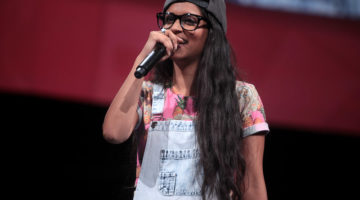
Photo provided by Wikipedia.org
By Blake Nelson
“Deadpool” opened with massive box-office success, and throughout the past week it has continued on to break previous records for R-rated films; 10 days into the film’s box-office release, it sits at just under half a billion dollars. The widespread appeal that the movie has garnered seems to derive from its overall connection to the current moviegoer.
Every generation since the mid-1900s has had a popular superhero that represents the era’s ideals. The 1950s had Superman, the idealized fighter of evil with no flaws, while the 2000s had the ordinariness of Spider-Man to look up to.
The millennials seem to be no different, however, our superhero is no hero at all, but rather a cynical anti-hero with a sarcastic slant.
The titular character in the new film is played by Ryan Reynolds, an actor who is known for his wit and generally sardonic demeanor, and many people have drawn connections between him and the character before.
Deadpool, the character, is a sort of hyper-Reynolds. Being ironic and self-aware, and using crude language are just some of the ways that Deadpool is characterized by fans of the comic books. Most notably, Deadpool is able to break the fourth wall, a feature heavily used in the film that creates a dramatic irony for comic effect.
The film especially succeeds in the comic realm, probably being the funniest Marvel film to date. With quick quips and niche pop-culture references, the film holds the attention of the audience, which is waiting to catch the next meta joke directed straight at it.
This meta relationship that the movie has with its audience is partly the key to why our generation enjoys the film so much — millennials tend to see the flaws of popular forms of media and, as a result, turn to parody or satire.
Multiple times in the film, Deadpool suggests that filmmakers didn’t have the budget to accommodate some of the action. This is true, as 20th Century Fox cut $7 million dollars from the budget before it was greenlit for production. Audience members seem to appreciate this sort of commentary on comic movies and film studios as a whole in a biting realism that only makes it funnier.
The film does great regardless of budget cuts, coasting through jokes that make it clear that only Reynolds could play this character. All of these jokes are spot-on and biting in delivery.
However, one of the only problems comes from the typical format that the movie so loves to mock. Despite how original Deadpool as a character may be, the story was a run-of-the-mill superhero movie with an antagonist who is essentially every other bad guy in most movies.
The directing was standard as well, without too much going on stylistically — some of the scenes in between action were drab with hardly any direction besides exposition and the one off-color joke to keep the viewer interested.
By extension, the action was also directionally uninspired. The fight scenes were bullet time effects, big explosions and quick cuts in between all of the action.
But all of this can be forgiven because of the film’s refreshing take on the action-comedy genre. Most instrumental in this is the Deadpool character itself.
The film is carried by Deadpool in the way only a good character can carry a film. That’s not to say the film will age well, considering it’s directed specifically toward millennials and fans of meta humor. But with a character that relevant and good, it can be expected that a “Deadpool” sequel will be coming soon.
If the numbers speak for anything, then they only show that audience members love “Deadpool.” The coming weeks will only show how much this generation actually enjoys the character of Deadpool, but so far it’s record-breaking.
Blake Nelson can be reached at tbynum@sagebrush.unr.edu or on Twitter @b_e_nelson.












